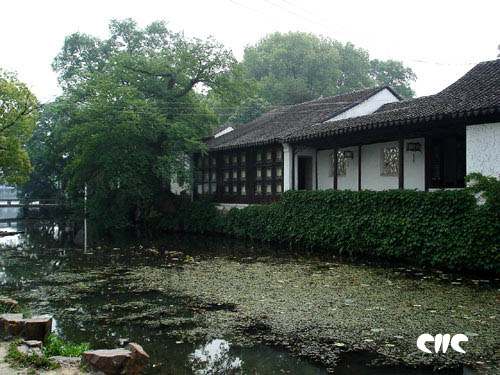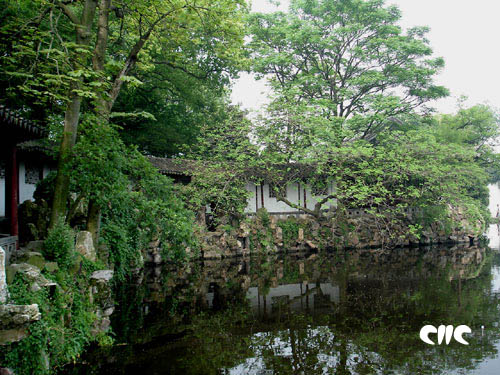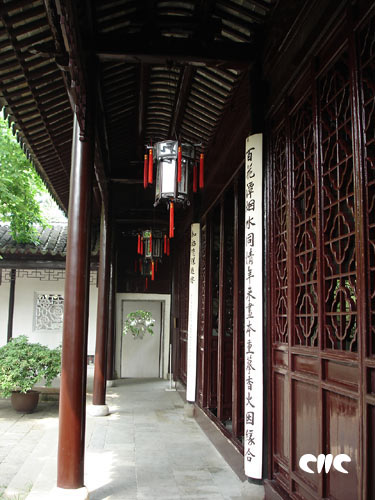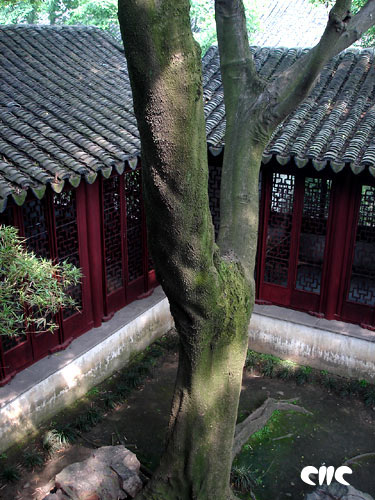| Tools: Save | Print | E-mail | Most Read |
| Canglang Pavilion (Blue Wave Pavilion) |
| Adjust font size: |
Canglang Pavilion is located in the southern part of
During that part of history, a scholar Su Shunqing was demoted and sent to Unique Features Unlike other gardens, Canglang Pavilion emphasizes the harmony between man made buildings and the natural environment. Before entering the garden, you can see beautiful scenery composed of a green water pool that is surrounded by a growth of weeping willows.
In the garden you will see incredible man made rock formations that are divided into two parts. On the eastern side, the earth has been mixed with natural yellow stones and built in such a manner that it resembles a natural hill. On the western side, exquisite stones from the lake have been used to create another naturally appearing hill. Both of these rock formations have been planted with green trees and viridian bamboos that add to the beauty of the scene and create the sensation of walking in a primitive mountain forest. There are also winding corridors with pavilions that link the hills and pools together. As you walk along these corridors that follows a path alongside the unique stone formations and strategically planted ancient trees, it seems as if you were walking in a primitive forest. The architectures that have been built in the garden are simply and classically designed which present a Qing Dynasty (1644-1911) style.
Main Scenic Spots Winding corridors throughout the garden link the scenic spots of the garden. On the walls of the corridor, there are 108 lattice windows of various designs through which you can enjoy the beauty of the pool outside and the hill in the center of the garden. The intricate patterns of the windows are interesting and enhance the beauty of the corridor.
Facing Water Veranda is a four-sided hall beside the water to the west of the corridor. When you are tired after long walk, you can sit and drink a cup of tea while enjoying the quiet and beautiful surroundings of the garden. At the eastern end of the corridor, a square pavilion sits on a stone beside the pool. It is called Fishing Terrace which is a perfect place to sit and watch different varieties of fish swimming in the pool. Crossing the corridor, you can climb up the man made rock formation along a gently winding path. Among a sea of green trees, a square antique Canglang Pavilion can be seen indistinctly. The beams of the pavilion are carved with intricate patterns of fairy children, flowers, birds, and animals. From inside the pavilion, you can see the beauty of the entire garden.
Mingdao Hall is the main building in the garden. In the hall are three rooms that were once used as a place for ancient scholars to study. Inside the hall, there are also rubbings of three stone tablets including the Astronomic Picture, Geographic Picture and Pingjiang Prefecture Picture which are the priceless treasures of Fragrance House is to the west of the Mingdao Hall. When autumn comes, the house is filled with the delicate fragrance of the sweet-scented osmanthus that grows within the grounds of the garden. While sitting in Fragrance House, it is easy to enjoy both the beauty of the green rock formations and blue pools as well as the faint scent of osmanthus that adds to the joy and comfort of the scene. Five-Hundred Famous Ancient Sages Hall is also an important building in the garden. The stone statues of 594 ancient sages of In the southern end of the garden, a two-storey building called Travel Tips:
Admission Fee: 20 yuan (US$2.6) Opening Hours: 08:00 to 17:00 Bus Route: 1, 14, 28, 30, 51, 101, 102, 103, 701 Tourist (Chinatravelguide.com China.org.cn May 9, 2007)
|
| Tools: Save | Print | E-mail | Most Read |
 |
| Related Stories |
|
Product Directory China Search |
Country Search Hot Buys |




